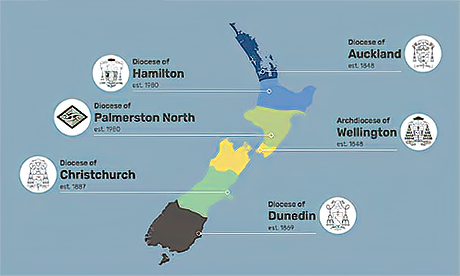The Holy See announced last Wednesday that Pope Francis has accepted the resignation of Archbishop George Stack of Cardiff, Wales, appointing Bishop Mark O’Toole of the Diocese of Plymouth, England, to succeed him.
At the same time, O’Toole has also been named the Bishop of Menevia, the neighbouring Welsh diocese, which has had no bishop since 2019.
The pope united the sees in persona episcopi, unifying them in the person of the bishop who oversees them both, even while they remain juridically separate.
While the move is historically unusual, it has become increasingly common under Pope Francis, and could signal the eventual merger of dioceses in countries across the West, including the United States, in the face of declining numbers of clergy and Mass-going Catholics.
Francis announced in February that the Irish dioceses of Clonfert and Galway and Kilmacduagh would now share a bishop in Michael Duignan.
In November last year, the Vatican announced the union in persona Episcopi of the Italian sees of Turin and Susa.
Before those announcements, the Canadian Diocese of Alexandria-Cornwall shared a bishop with the Archdiocese of Ottawa from December 2018 until 2020, when the two sees were formally combined into the Archdiocese of Ottawa-Cornwall.
A little further north, that same year Pope Francis reunified the Alaskan Archdiocese of Anchorage and the Diocese of Juneau.
The prospect of merging dioceses in the many countries with shrinking Catholic populations has long been discussed as a possibility among Church-watchers. And while in personaunions have yet to be made between dioceses in the United States, the numbers suggest it may be a question of when, not if, such appointments come.
As many bishops confront sharp declines in parish Mass attendance over recent decades, or (often and) a drop in the number of priests in active ministry, many have undertaken sweeping reviews of their parish footprints, often combining the governance of several parishes under a single pastor as a first step towards formal mergers.
The same trends apply upstream — where the same solutions could soon be tried.
As parish closures and mergers result in more consolidated diocesan footprints, diocesan bishops are ageing as fast as their clergy, and there is a shrinking pool of qualified and willing clergy from which to draw replacements:
While no official data is released on how many priests say “no” when the Vatican calls, or why, it’s not unusual to hear officials complain that as many as one in three potential bishops-elect politely decline. Many are said to cite the challenges of managing a shrinking institutional footprint among their reasons.
The merger of parishes at the local level, even in urban or suburban areas where the communities already live in close proximity, is often emotionally sensitive for congregations, and logistically difficult to manage at the administrative and legal levels.
At the pastoral level, communities often have very different characters, liturgical preferences, and approaches to evangelization and ministry to the wider community.
Often the first step towards bringing two such parishes together is the appointment of a single pastor who can, through his personal ministry, begin to fashion a common culture ahead of a formal union.
The prospect of combining dioceses, especially those with large territorial footprints but very decentralized communities, would present these same challenges on a larger scale. Continue reading
- Ed Condon is a co-founder and editor of The Pillar.
News category: Analysis and Comment, Great reads.




